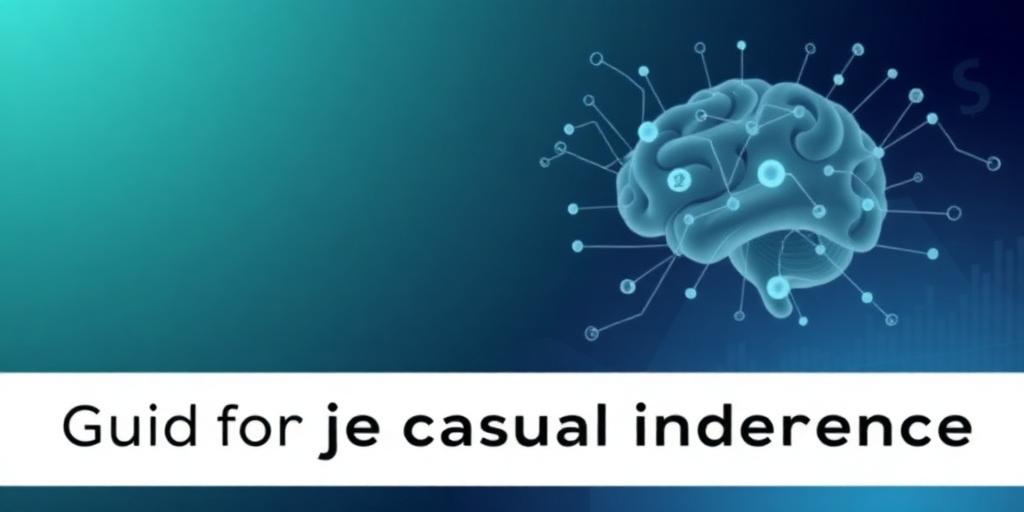A Guide to Causal Inference
In the vast landscape of data science and analytics, distinguishing between mere correlation and genuine causation stands as a fundamental challenge. A significant correlation might suggest a relationship, but it does not, by itself, indicate that one variable directly influences another. This crucial distinction underpins the field of causal inference, a discipline dedicated to identifying and quantifying cause-and-effect relationships from data. This guide provides a comprehensive overview of causal inference, its core principles, and key methodologies, enabling a deeper understanding of how interventions truly impact outcomes.
The Imperative of Causal Understanding
For organizations and researchers alike, moving beyond descriptive analytics to prescriptive insights is paramount. Understanding causal relationships allows for informed decision-making, effective policy design, and the optimization of strategies. Without a robust framework for causal inference, interventions based solely on correlation risk misattributing effects, leading to inefficient resource allocation or even detrimental outcomes. For instance, while ice cream sales and drownings might correlate, one does not cause the other; a latent variable, such as warm weather, is the common cause. Recognizing such spurious correlations is critical for accurately understanding causal relationships.
The Counterfactual Framework: The Core of Causal Inference
At the heart of causal inference lies the concept of counterfactuals. To ascertain the causal effect of an intervention (e.g., a new marketing campaign), we must consider two potential outcomes for a given unit (e.g., a customer): the outcome if the intervention occurred, and the outcome if it did not. The causal effect is the difference between these two potential outcomes. However, only one of these outcomes can ever be observed. The unobserved outcome is the counterfactual. The challenge of causal inference, therefore, is to estimate this unobservable counterfactual outcome.
Key Causal Inference Methods and Techniques
A variety of causal inference methods have been developed to tackle the challenge of the unobservable counterfactual. These methods can broadly be categorized based on their design and the assumptions they entail.
1. Randomized Control Trials (RCTs)
Often considered the 'gold standard', RCTs involve randomly assigning subjects to either a treatment group (receiving the intervention) or a control group (not receiving it). Randomization ensures that, on average, all other factors (confounders) are equally distributed between the groups. This balance allows any observed difference in outcomes to be attributed causally to the intervention. While powerful, RCTs are not always feasible due to ethical, logistical, or cost constraints, particularly when applying causal inference in data science in real-world business settings.
2. Quasi-Experimental Designs
When true randomization is not possible, quasi-experimental designs offer robust alternatives. These causal inference techniques leverage naturally occurring variations or institutional rules that mimic random assignment:
- Difference-in-Differences (DiD): This method compares the change in outcomes over time between a group that received an intervention and a similar control group that did not. It effectively controls for unobserved factors that change similarly in both groups.
- Regression Discontinuity (RD): Applicable when an intervention is assigned based on whether a continuous variable crosses a specific threshold. By comparing units just above and below the threshold, RD can isolate the causal effect.
- Instrumental Variables (IV): IVs are variables that affect the treatment assignment but do not directly influence the outcome except through the treatment. They help to isolate the exogenous variation in the treatment, thereby estimating its causal effect.
3. Observational Study Methods
In many scenarios, data is simply observational, meaning the intervention was not controlled by the researcher. Here, the primary challenge is confounding – when a third variable influences both the intervention and the outcome. Sophisticated causal inference techniques are employed to address confounding:
- Propensity Score Matching (PSM): PSM attempts to balance observed confounders between treatment and control groups by matching subjects based on their 'propensity score' – the probability of receiving the treatment given their observed characteristics.
- Inverse Probability Weighting (IPW): Similar to PSM, IPW uses propensity scores to weight observations, creating a pseudo-population where treatment assignment is independent of observed confounders.
Challenges and Assumptions
Each causal inference method relies on specific assumptions. Violating these assumptions can lead to biased estimates. For instance, DiD assumes parallel trends between groups in the absence of treatment, while PSM and IPW assume 'no unmeasured confounders' (i.e., all relevant confounders have been observed and accounted for). A deep understanding of these underlying assumptions is critical for selecting the appropriate method and interpreting results responsibly, ensuring the true benefits of causal inference are realized.
Conclusion
Causal inference is an indispensable tool for anyone seeking to move beyond mere observation to actionable insight. By systematically applying rigorous methodologies, we can confidently identify and quantify cause-and-effect relationships, enabling more effective decision-making across diverse fields, from public health to marketing analytics. Mastering these causal inference techniques not only enhances analytical capabilities but also fosters a more profound understanding of the mechanisms driving outcomes, paving the way for data-driven innovation and impact.








